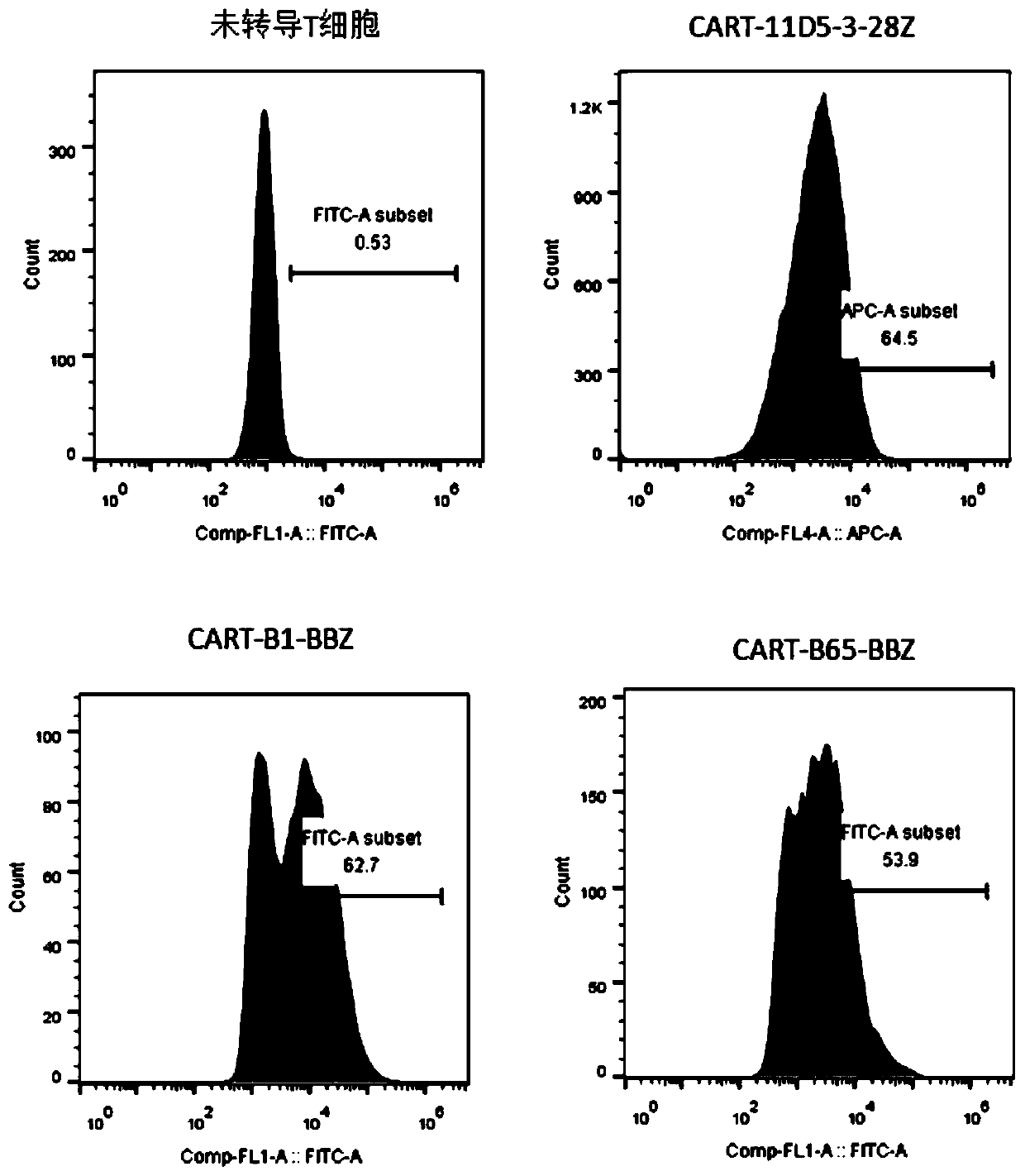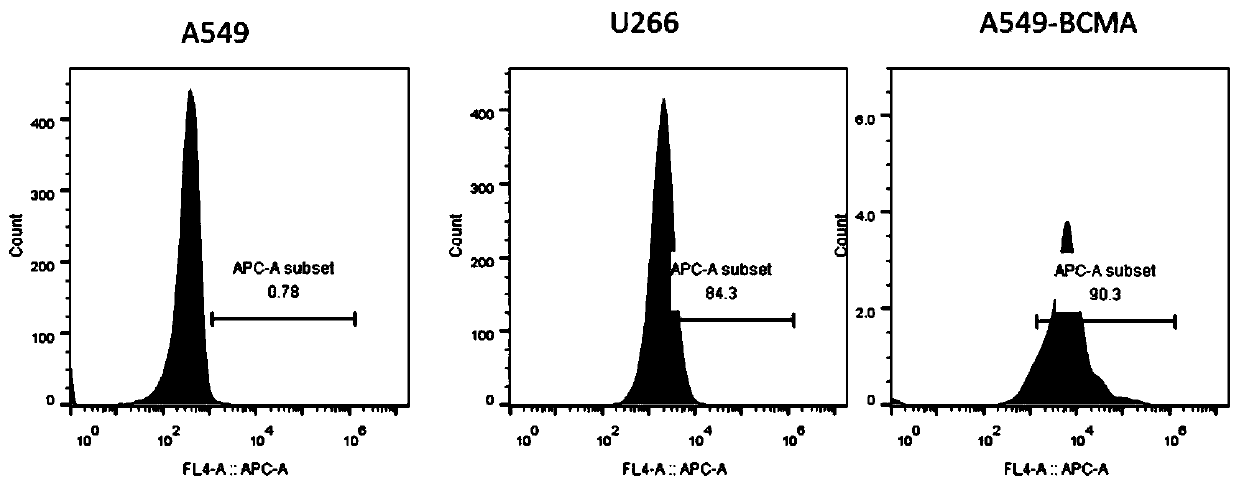Chimeric antigen acceptor of target BCMA (B cell maturation antigen) and application of chimeric antigen acceptor
A chimeric antigen receptor, targeting technology, applied in the direction of targeting specific cell fusion, peptides containing localization/targeting motifs, applications, etc. Short half-life and other problems, to achieve the effects of small molecular weight and immunogenicity, high-efficiency specific treatment, and long retention time
- Summary
- Abstract
- Description
- Claims
- Application Information
AI Technical Summary
Problems solved by technology
Method used
Image
Examples
Embodiment 1
[0050] This example provides a method for constructing the above-mentioned CAR molecule into the lentiviral vector pHAGE.
[0051] According to the construction of BCMA CAR molecules in this example, according to the different antigen recognition regions and signal regions of CAR molecules, they can be divided into three types: B1-BBZ, B65-BBZ, and 11D5-3-28Z: the intracellular CAR molecules used in B1-BBZ The signal region is 4-1BB-CD3ζ, and the antigen recognition region adopts B1; the intracellular signal region used in B65-BBZ is 4-1BB-CD3ζ, and the antigen recognition region adopts B65; while the intracellular signal region adopted in 11D5-3-28Z The inner signal region is CD28-CD3ζ, and the antigen recognition region adopts 11D5-3; its molecular structure pattern is as follows figure 1 shown. The above CAR molecule was constructed into the lentiviral vector pHAGE by conventional molecular cloning methods.
[0052] Construction of the B1-BBZ vector: First, obtain the cor...
Embodiment 2
[0056] This example is the construction of BCMA CAR-T cells. The CAR molecules are packaged into lentiviruses, transduced into T cells, and the transfection efficiency is measured.
[0057] Packaging of CAR lentivirus: first, the plasmids prepared in Example 1 were respectively extracted using the QIAGEN endotoxin-free large-scale plasmid extraction kit.
[0058] The constructed lentiviral plasmids pHAGE-B1-BBZ, pHAGE-B65-BBZ, pHAGE-11D5-3-28Z and the lentiviral system auxiliary packaging plasmids pMD2.G and pSPAX2. Spread 1.8×10E7293T into T175 culture flasks one day before transfection. 1 hour before transfection, the medium of 293T cells was replaced with 30ml of serum-free medium. The plasmid was co-transfected into 293T cells using the calcium phosphate precipitation method, and the cell culture medium was replaced with 60ml of complete medium DMEM+10%FBS 24 hours after transfection. The cell supernatant was harvested 48 hours after transfection, and 60ml of fresh compl...
Embodiment 3
[0061] This example is for the construction of BCMA target cells and the determination of the activity of BCMA CAR-T cells.
[0062] Identification and construction of BCMA CAR-T target cells: Use flow cytometry to detect the expression of BCMA on cell lines such as U266 and A549, such as image 3 As shown, U266 cell line highly expresses BCMA antigen, while A549 hardly expresses BCMA antigen. A lentiviral vector encoding BCMA gene was used to screen with puromycin to construct A549 cell line A549-BCMA which highly expressed BCMA antigen. BCMA expression levels in the A549-BCMA cell line see image 3 . according to image 3 The results showed that the A549-BCMA and U266 cell lines were positive for BCMA, while the A549 cell line was negative for BCMA.
[0063] IFN-γ and IL2 secretion experiment: In a 96-well plate, three kinds of CART cells B1-BBZ, B65-BBZ and 11D5-3-28Z and four effector cells of control T cells and target cells U266 were used at a 5:1 effect-to-target ra...
PUM
 Login to View More
Login to View More Abstract
Description
Claims
Application Information
 Login to View More
Login to View More - R&D
- Intellectual Property
- Life Sciences
- Materials
- Tech Scout
- Unparalleled Data Quality
- Higher Quality Content
- 60% Fewer Hallucinations
Browse by: Latest US Patents, China's latest patents, Technical Efficacy Thesaurus, Application Domain, Technology Topic, Popular Technical Reports.
© 2025 PatSnap. All rights reserved.Legal|Privacy policy|Modern Slavery Act Transparency Statement|Sitemap|About US| Contact US: help@patsnap.com



